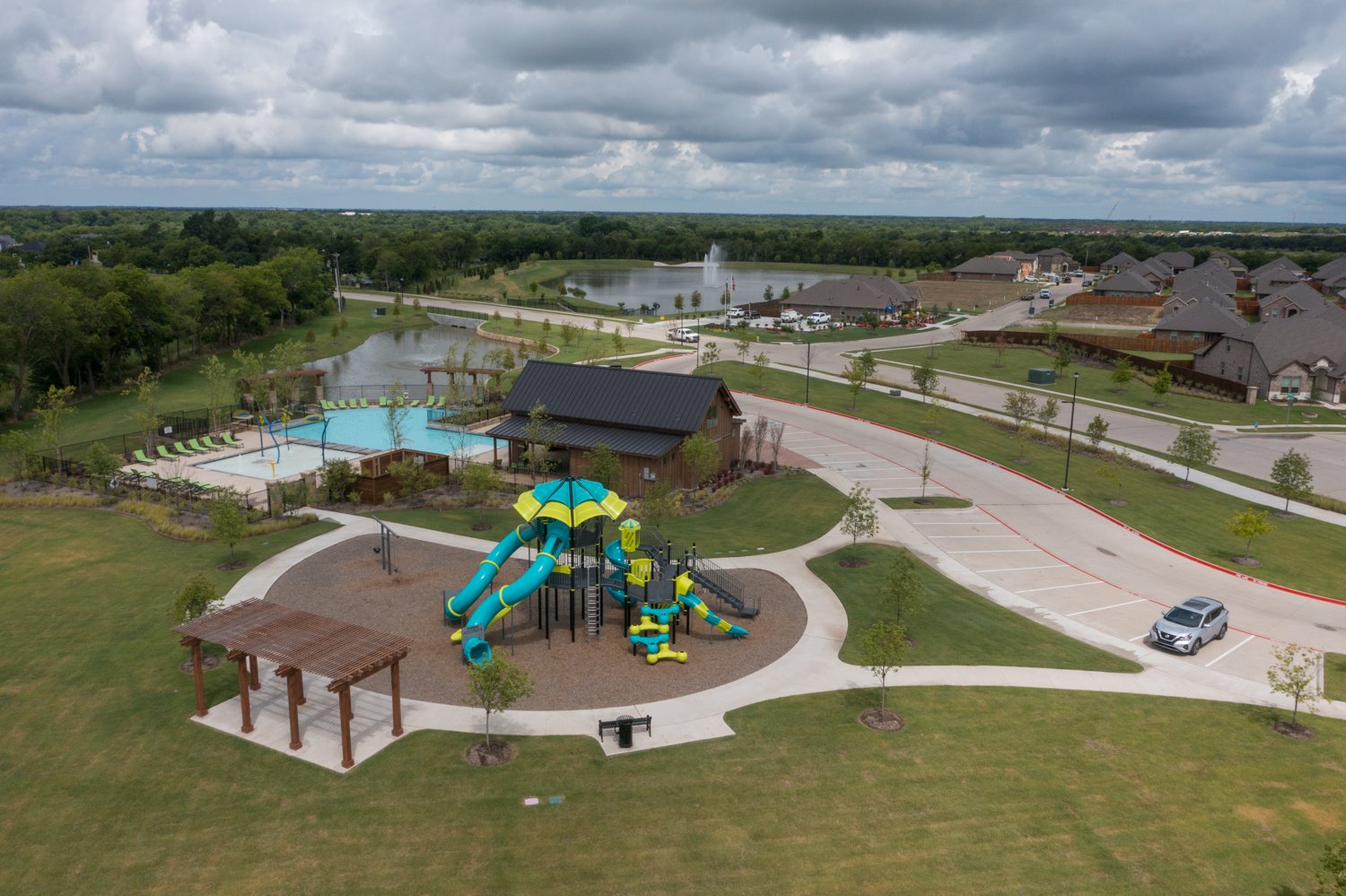Weathering the Storm: The Impact of Mother Nature on Playground Equipment
Posted by May Recreation Content Team on

Playgrounds are essential for children's physical and social development as well as providing a hub of joy and activity for the community.
This safe and fun environment is constantly exposed to the elements – from scorching heat to pounding rain to driving snow -- weathering can take a toll on the lifespan and safety of playground equipment.
It’s important to understand the options and best practices for protecting your playground equipment from the wear and tear of weather.
“Your playground equipment should provide several years of use. Sun shades over the playground help reduce the impact of UV rays on the finish and the equipment to reduce sun damage. They may also offer some protection from precipitation. Even covered playgrounds should have adults check that the equipment does not have water, ice, or snow on it after a weather event before allowing kids to play on it,” advises Miracle Recreation.
Let's look closer at the different elements that can affect your playground equipment:
Sun: The Silent Culprit
This past summer was unlike any we have experienced before with NASA announcing that it was the Earth’s hottest summer since global records began in 1880.
This can be bad news for little ones with some news stations measuring playground equipment at 137 degrees in blasting heat.
Over time, the sun and its UV rays can take a toll on playground equipment:
- Effect: Prolonged exposure to sunlight can cause plastic and rubber components to fade, weaken, and become brittle. Even metal components can be susceptible to damage.
- Protection: Apply UV-resistant coatings to equipment and use shade structures to reduce direct sunlight.
Rain: A Frequent Visitor
When the rain comes, playground visitors head for protection but playground equipment is exposed to the effects of moisture.
Water and freezing temperatures do not mix well together as when water freezes, it expands, and this can lead to cracks in concrete surfaces and damage to playground equipment made from other materials.
- Effect: Constant exposure to rain can lead to rust on metal parts, warping of wood, and degradation of materials.
- Protection: Regularly apply water-resistant sealants and use weather-resistant materials like stainless steel or coated metals.
Snow and Ice: Winter's Chill
For some areas of the country, snow and ice are a challenge over the winter months with a risk of not only playground equipment damage but falls and injuries to those hearty enough to brave the elements.
- Effect: Ice accumulation can damage surfaces and freeze moving parts, leading to cracks and breakages.
- Protection: Choose materials designed for cold climates, and clear snow regularly to prevent buildup.
Hail: Nature's Pellets
Sudden hailstorms can not only be scary for playground goers, but their impact can damage playground equipment.
- Effect: Hail can cause dents, scratches, and cracks on surfaces and weaken the structural integrity of playground equipment.
- Protection: Invest in impact-resistant materials and consider covers during severe weather warnings.
Wind: The Invisible Adversary
Wind can carry debris, such as branches, leaves, and trash, which can pose hazards to children playing on or around the equipment. Strong winds can also exert force on playground equipment, potentially causing it to sway, tip over, or break.
- Effect: High winds can lead to structural stress and, in extreme cases, topple or displace playground equipment.
- Protection: Install windbreaks or natural barriers, secure movable parts, and regularly inspect for signs of stress or damage.
Salt Water: A Coastal Challenge
Living by the seashore certainly has its charms but one of them is not the harmful corrosion effects of sea spray and saltwater on playground equipment.
- Effect: Saltwater accelerates corrosion, particularly in metal components, leading to rust and deterioration.
- Protection: Use corrosion-resistant materials and apply protective coatings. Rinse equipment regularly with fresh water.
Special Considerations: Extreme Weather Events
Extreme weather events pose their own special risk to playground equipment.
The much-needed rain earlier this year in California, for example, had consequences then flooding left several inches of mud on one school campus, destroying playground equipment.
What to look for:
Hurricanes and Tornadoes
- Effect: Heavy winds and debris can cause severe damage and displacement of playground structures.
- Post-Event Steps: Inspect equipment for damage, secure loose parts, and replace or repair as necessary.
Flooding
- Effect: Submersion can lead to structural damage, corrosion, and contamination.
- Post-Event Steps: Disassemble and clean equipment, inspect for water damage and replace any compromised parts.
Wildfires
- Effect: Intense heat can melt and distort plastic components and weaken metal structures.
- Post-Event Steps: Assess structural integrity, replace melted parts, and ensure surfaces are safe for use.
Best Practices for Protecting Playground Equipment
While playground equipment will always be exposed to the elements, there are some best practices for protecting playground equipment from the wear and tear of weather:
- Choose Durable Materials: Select playground equipment made from materials that are weather-resistant, such as high-density polyethylene (HDPE) plastic or galvanized steel.
- Regular Maintenance: Inspect playground equipment regularly for signs of wear and tear and make repairs promptly.
- Cleaning: Regularly clean equipment to remove debris, salt, and contaminants. Lubricate moving parts to prevent rust and ensure smooth operation.
- Protective Coatings: Apply protective coatings, sealants, and paints to metal components to prevent rust and corrosion. Consider anti-UV coatings to prevent sun damage.
- Shade: Provide shade structures to protect equipment (and children!) from direct sunlight and excessive heat. Consider planting trees to provide natural shade.
- Drainage: Ensure proper drainage around playground equipment to prevent water accumulation and erosion.
- Windbreaks: Consider installing windbreaks around playgrounds to reduce wind exposure and the risk of wind-related damage.
- Emergency Preparedness: Develop an emergency plan for extreme weather events. Have protocols for post-event inspections and repairs.
By following these guidelines, you can help to extend the lifespan of your playground equipment and ensure that it remains a safe and enjoyable place for children to play.
Remember, shade structures, regular maintenance, and preventative measures are key to minimizing the impact of weather on your playground.
While playground equipment updates usually take place every 8 to 10 years, protecting your equipment from the weather can help extend its life well beyond 10, 15, 20, or more years.
